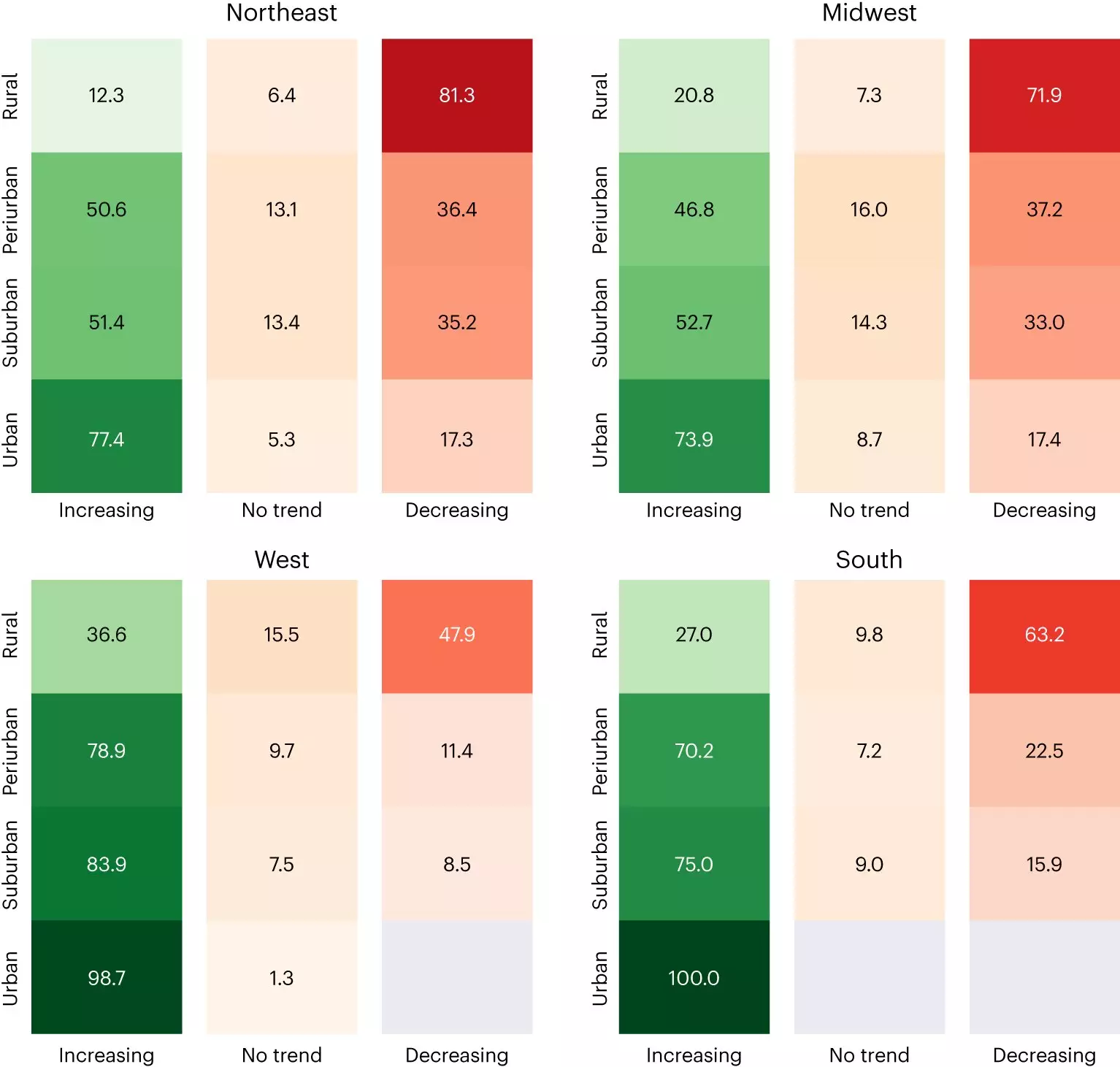The University of Illinois Chicago conducted a study to predict the population growth or decline of U.S. cities by 2100. Environmental engineers Uttara Sutradhar, Lauryn Spearing, and Sybil Derrible utilized census data and demographic surveys to understand the factors influencing population changes. By combining publicly available data sources and climate change models, the researchers aimed to make predictions under different scenarios.
Predicting population changes in cities is challenging due to the interplay of numerous variables. Factors such as immigration, tax rates, home prices, birth rates, job availability, and political climate all contribute to people’s decisions to stay or move away. Additionally, global warming poses a threat to the livability of certain cities, with increased temperatures making some areas too hot and coastal cities at risk of submergence.
To simplify the task, the research team focused on studying recent and ongoing population trends. They analyzed data from the U.S. census between 2000 and 2020, which provided insights into current population patterns for 24,295 cities with consistent data. Subsequently, they used two datasets from the Census Bureau’s 2020 TIGER/Line Shapefiles to estimate future population trends for 31,568 U.S. cities. These estimations were then compared to climate change projections under various scenarios.
The study revealed that approximately 50% of U.S. cities could experience population declines within the next 70 years—an increase from the 43% recorded in 2020. Notably, the Midwest and Northeast regions are expected to experience the most significant declines. However, this decline is not anticipated to affect major cities such as New York and Chicago. Conversely, cities in the south and west of the country, particularly those that are well-established and currently growing like Phoenix and Houston, are expected to witness population growth.
Research endeavors like this hold great importance as they provide city planners with valuable insights and extended lead times to prepare for different scenarios. Rapidly growing cities may face challenges in providing adequate services due to strains on infrastructure and resources. On the other hand, cities experiencing population decline may struggle to maintain services with a diminishing tax base. By anticipating population changes, city planners can proactively address the demands and challenges associated with growth or decline.
The study conducted by environmental engineers at the University of Illinois Chicago sheds light on the potential population changes expected in U.S. cities by the year 2100. By utilizing existing census data, demographic surveys, and climate change models, the researchers were able to project population growth, decline, and the regions likely to be most affected. This research provides crucial insights for city planners, enabling them to prepare adequately for the future and ensure the provision of essential services amidst changing demographics.



Leave a Reply